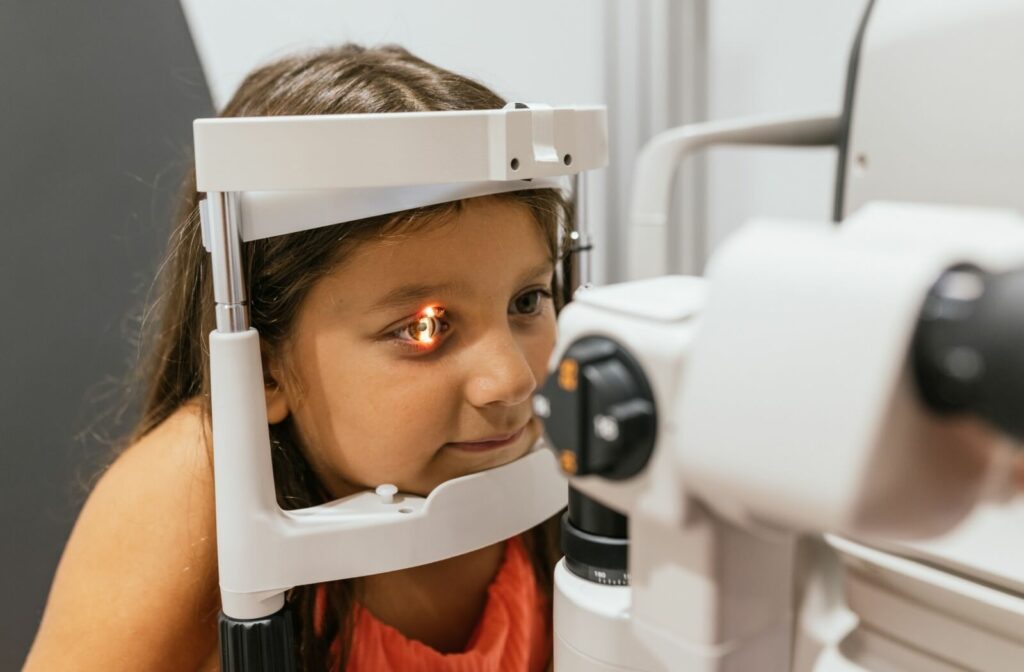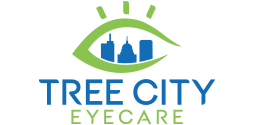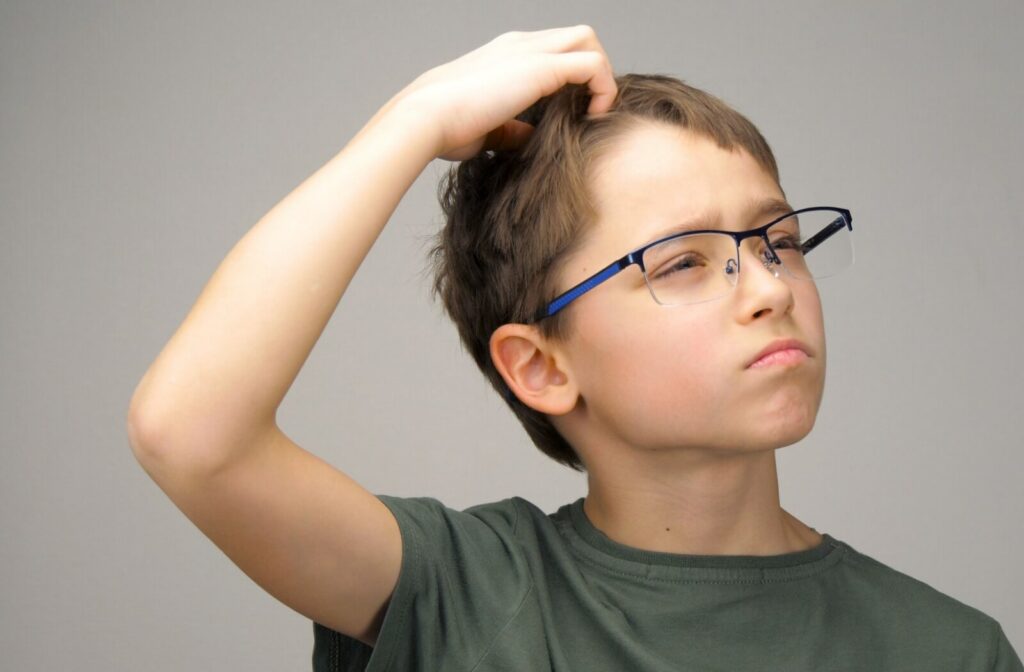Nearsightedness, or myopia, is a common vision condition that affects millions of children. While myopia cannot be fully reversed, there are effective ways to manage and slow its progression. By understanding what causes myopia and how it develops, parents can take proactive steps to protect their child’s vision.
Routine children’s eye exams play an essential role in detecting and managing myopia early. Modern solutions like myopia control treatments are designed to slow progression and protect your child’s long-term vision.
Is Myopia (Nearsightedness) a Disease?
Myopia traditionally has not been classified as a disease but rather a refractive error. There are many experts who recommend reclassifying myopia as a disease because of the resulting abnormal eye growth and its association with vision threatening conditions later in life. Myopia occurs when the shape of the eye causes light to focus in front of the retina instead of directly on it, resulting in blurry distance vision. While near vision typically remains unaffected, myopia can worsen over time, particularly during childhood and adolescence.
Severe cases of myopia—known as high myopia—can increase the risk of serious eye problems later in life. Complications such as retinal detachment, glaucoma, and macular degeneration are more common in individuals with high myopia.
These risks highlight the importance of early intervention and management through options like orthokeratology lenses and other innovative treatments.
When Should I Be Concerned About My Child’s Nearsightedness?
While myopia is incurable, mild myopia is often manageable. However, there are certain signs and behaviors that may indicate that your child’s vision is worsening or requires closer attention.
You should be concerned if your child:
- Squints frequently to see distant objects.
- Struggles to see the board in the classroom.
- Complains of headaches or eye strain after activities like reading or using screens.
- Sits very close to screens or holds books unusually close while reading.
If you notice these signs, scheduling a children’s eye exam is essential to assess their vision and explore potential treatments. Specialized interventions, such as myopia control lenses, can help slow progression and improve your child’s quality of life.
Why Does My Child’s Vision Keep Getting Worse?
The progression of myopia in children can often feel frustrating for parents. Understanding the factors that contribute to worsening vision can help guide effective solutions.
Natural Eye Growth
Children’s eyes grow and develop as they age, and in those with myopia, this growth causes the eyeball to elongate excessively. This elongation increases the severity of the refractive error, leading to progressively blurrier vision when looking at distant objects.
Lifestyle Influences
Modern lifestyles often involve prolonged periods of near-vision tasks, such as reading or using digital devices. These activities strain the eyes and can accelerate the progression of myopia, especially when combined with limited outdoor activity.
Genetics
If one or both parents are nearsighted, their child is more likely to develop myopia and experience faster progression. Genetics play a significant role, though environmental factors also influence the severity of the condition.
Environmental Factors
Spending less time outdoors and more time in artificial lighting may contribute to myopia progression. Exposure to natural light is believed to support healthy eye development, making outdoor play an essential part of managing myopia.

Does the Quality of Sleep Affect Myopia Progression in Children?
Sleep plays a critical role in overall health, and research suggests it may also influence myopia progression. Poor sleep quality or insufficient rest can contribute to eye strain, which exacerbates the symptoms of myopia.
Sleep & Eye Growth
Melatonin, a hormone regulated by sleep, may play a role in controlling eye growth. Disruptions in melatonin levels due to poor sleep habits could affect the way the eyes develop during childhood. While more research is needed to fully understand this connection, ensuring proper sleep hygiene can benefit both eye health and overall well-being.
Tips for Better Sleep
To support healthy sleep:
- Establish a consistent bedtime routine.
- Limit screen exposure before bed to reduce blue light interference with melatonin production.
- Encourage outdoor activity during the day, as it helps regulate the body’s natural sleep-wake cycle.
How Can Parents Manage Myopia in Children?
While myopia cannot be reversed, there are effective strategies to manage its progression and reduce associated risks. Taking a proactive approach can help your child maintain clearer vision and avoid potential complications.
Routine Eye Exams
Scheduling regular eye exams is essential for monitoring changes in vision. Early detection allows for timely adjustments to prescriptions and the implementation of management strategies.
Orthokeratology (Ortho-K)
Ortho-K lenses are specialized contact lenses worn overnight to reshape the cornea temporarily. These lenses allow clear vision during the day and have been shown to slow the progression of myopia.
Myopia Control Lenses & Atropine Drops
Specialized contact lenses, such as MiSight, and low-dose atropine eye drops are proven treatments for slowing myopia progression in children. These options are safe and effective, providing tailored solutions to your child’s needs.
Encouraging Outdoor Time
Spending at least one to two hours outdoors daily has been linked to slower myopia progression. Natural light and physical activity are beneficial for overall health and may support better eye development.
Managing Screen Time
Limiting prolonged screen use and encouraging regular breaks during near-vision tasks can help reduce digital eye strain. For children, a 5-10 minute break every 30 minutes of screen time is recommended to reduce the risk of excessive eye growth. Following the 20-20-20 rule—looking at something 20 feet away for 20 seconds every 20 minutes—is a simple yet effective strategy for adults hoping to reduce eye strain.
Myopia Care For Your Child at Tree City Eyecare
At Tree City Eyecare in Boise, we understand the challenges of managing myopia in children. Dr. Dixon is proud to be the first and only practitioner in Idaho certified in myopia management by the International Academy of Orthokeratology and Myopia Control. Our team offers myopia management solutions, including orthokeratology lenses and myopia control treatments, to help slow the progression of nearsightedness and protect your child’s vision.
To learn more about our services or schedule an appointment, book an appointment today. Let us help your child achieve clearer vision and better eye health.


